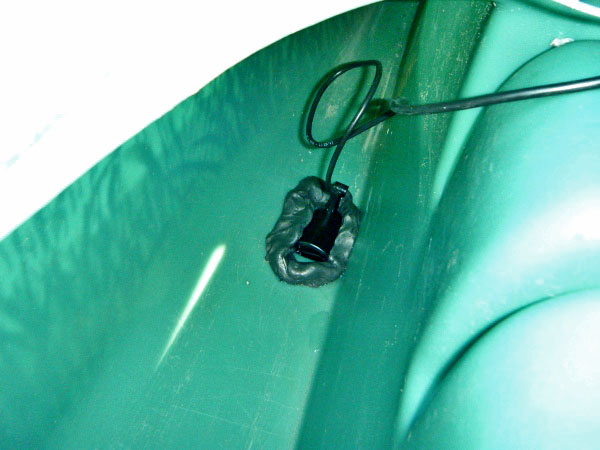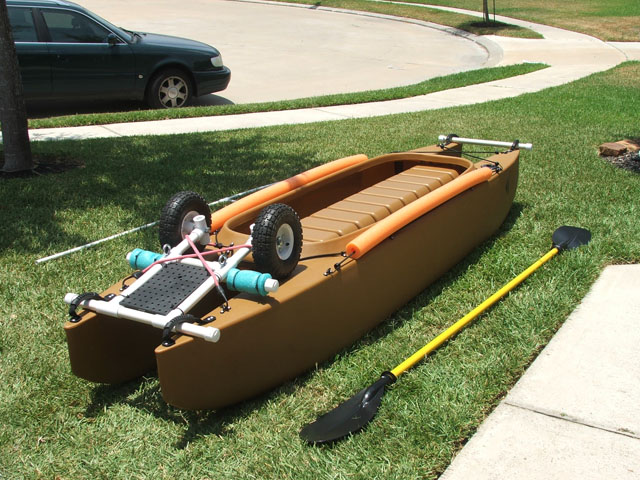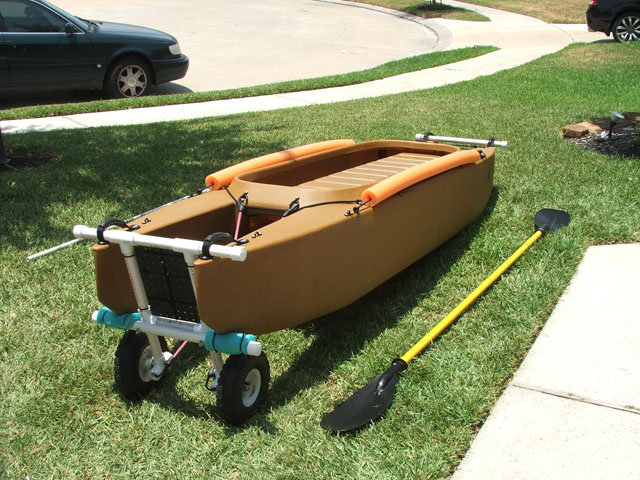Ads by a well known, nationwide, catalog and online distributor of outdoor apparel and gear, for high-end (labeled “deluxe”!…) sit-in angling kayaks, state the following versions of the same information:
“For outings of a few hours in calm to light winds on lakes, ponds and protected bays” and – “For outings of a few hours in calm to light winds”
Why are these fishing kayaks ads ridiculous?…
Simply, because what the advertisers really mean to say is:
“This kayak would make your back hurt within a short time, and sooner than later, you’d want to end your misery, and paddle back home. Besides, don’t even think to fish from it when the wind blows, or in moving water, because eddies would fill its low cockpit with water in no time, and you’d find your butt marinating in a floating pool… On top of this, you’d find it really hard to control this kayak and paddle it, because such kayaks don’t track well, and sooner or later you’d find yourself struggling to paddle back to your launching spot, pretty much at the mercy of the wind. In other words, our “deluxe” sit-in fishing yak is just a flat water craft, and essentially, a fair-weather friend – It’s not a reliable piece of gear. And since we’re a respectable and cautious outdoor gear and apparel company, we said something about it, so don’t say we didn’t warn ya!”
From your own experience, you already know that paddling while being wet and your back is sore is no fun at all, and it should be avoided.
Most people know that there’s no such thing as guaranteed fair-weather and mirror flat water doesn’t stay that flat for long, and he knows the weather has a tendency to change without consulting with kayakers, or anglers, and the wind has a nasty tendency to blow from where it comes, and not necessarily where you’d want it to go…
So why does that particular outdoor gear and apparel vendor tell its clients something about the limitations of those sit-in angling kayaks? It has to do with the terms of purchase that company offers, which include an unconditional return policy, with no questions asked. In other words, the vendor expects to have issues with unsatisfied clients wanting to return the lemons they had purchased, which is why somehow limiting the buyers’ expectations before they buy would be a reasonable measure to take.
Our article’s intention is not to criticize that particular kayak vendor – It’s quite the opposite, because in a way, this vendor tries to warn their clients about potential issues. They don’t make blatantly false claims such as “this kayak is so stable that you can fish standing in it”, which is a common, misleading statement that both kayak manufacturers and vendors often use. This particular vendor doesn’t claim that the angling kayak they offer for sale is ‘ergonomic’, which is yet another ridiculous claim that practically all kayak manufacturers and vendors make, one way or another… Etc.
Are These “Deluxe” Fishing Kayaks Different?
No, they aren’t. Those are wide, sit-in kayaks, featuring rod holders. They are no different from any other sit-in fishing kayak, and they’re not different from sit-on-top fishing kayaks, or ‘hybrid’ fishing kayaks (low canoes), in the sense that SOTs and hybrid kayaks too force their users into the notorious L posture that hurts their back, they too get their users wet as soon as there’s some wind blowing, and they also become hard to control and paddle when the wind picks up. They’re all the same, as far as sensible anglers are concerned.
Fishing Kayaks As Fair-Weather Friends
Stay away from fair-weather friends, because they’re unreliable, and they won’t be there for you when you need them. Any boat, or kayak, must be dependable, and a kayak that’s not dependable cannot properly serve sensible anglers.
We would argue that fishing kayaks are not even friendly to begin with, as far as nearly all anglers in this country are concerned, and rightfully so. Here is an article that discusses how fishing kayaks are perceived by most anglers >
The Only Fishing Kayak That’s both Friendly and Dependable:
The W is the only kayak worthy of being called a fishing kayak. This is a broad and far reaching statement, and here is some in-depth information to back it:
- This article explains how you can easily and effectively paddle, steer, and control your W fishing kayak in strong wind, without using a rudder >
- There is no need to say much about how W kayaks offer more free board, and provide more protection to their users than any other kayak out there, but here’s some information about how you can stay dry in your W kayak in waves, rain, etc >
- As for how long anglers use their W kayaks in single fishing trips, you can find plenty of testimonies from actual clients, in our website’s fishing kayaks reviews section > You’d find we have elderly clients who suffer from a variety of back problems and other physical limitation that spend long hours in their W kayaks, even when the weather is less than perfect…
- ‘Ergonomics’ is a word that everyone uses, and rather loosely, but if you’re interested to know why kayaks are synonym to back pain (a.k.a. ‘yak back’), have a look at this article about fishing kayaks’ ergonomics > The article also explains why W kayaks are known as the ‘No-Back-Pain’ kayaks
- Stability is recognized as being a key factor when kayak fishing is concerned, and W kayaks are far more stable than other fishing kayaks, including ones that feature various stabilizers – Here’s an article discussing fishing kayaks’ stability >
This pretty much summarizes the difference between all those fair-weather yaks, and yaks for fishing in the real world, known as W kayaks: The only kayaks worthy of being called fishing kayaks, because they actually solve problems that other kayaks merely address.







